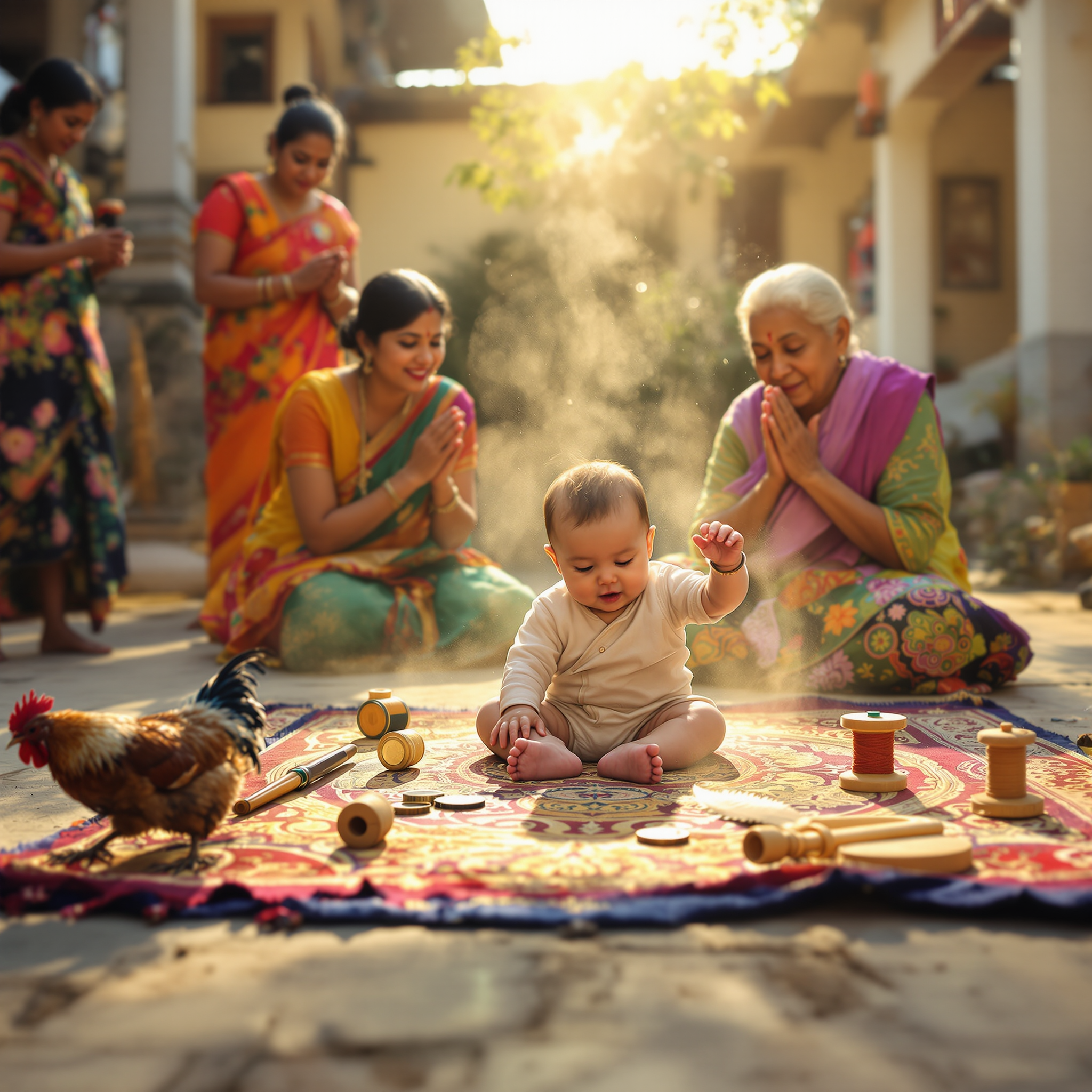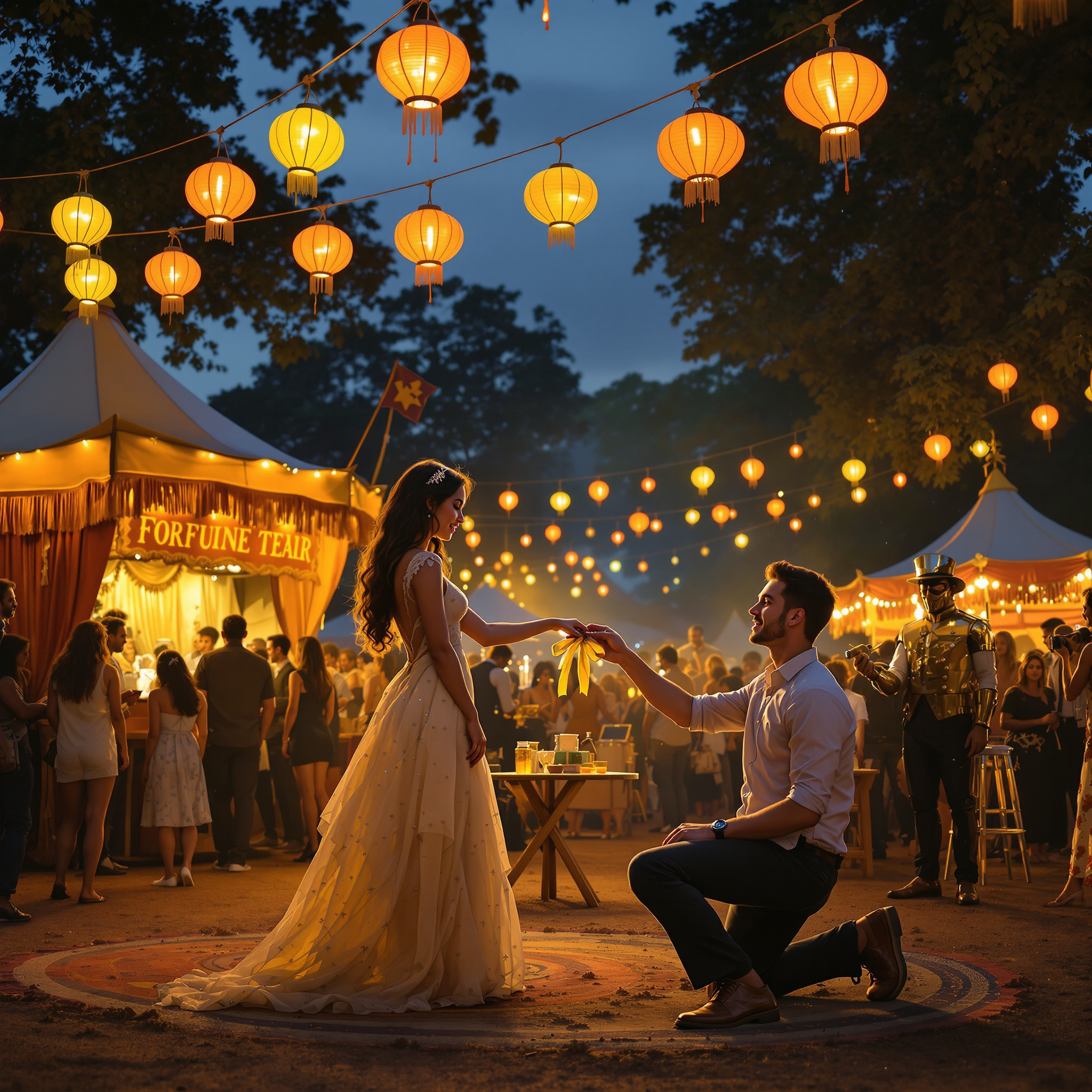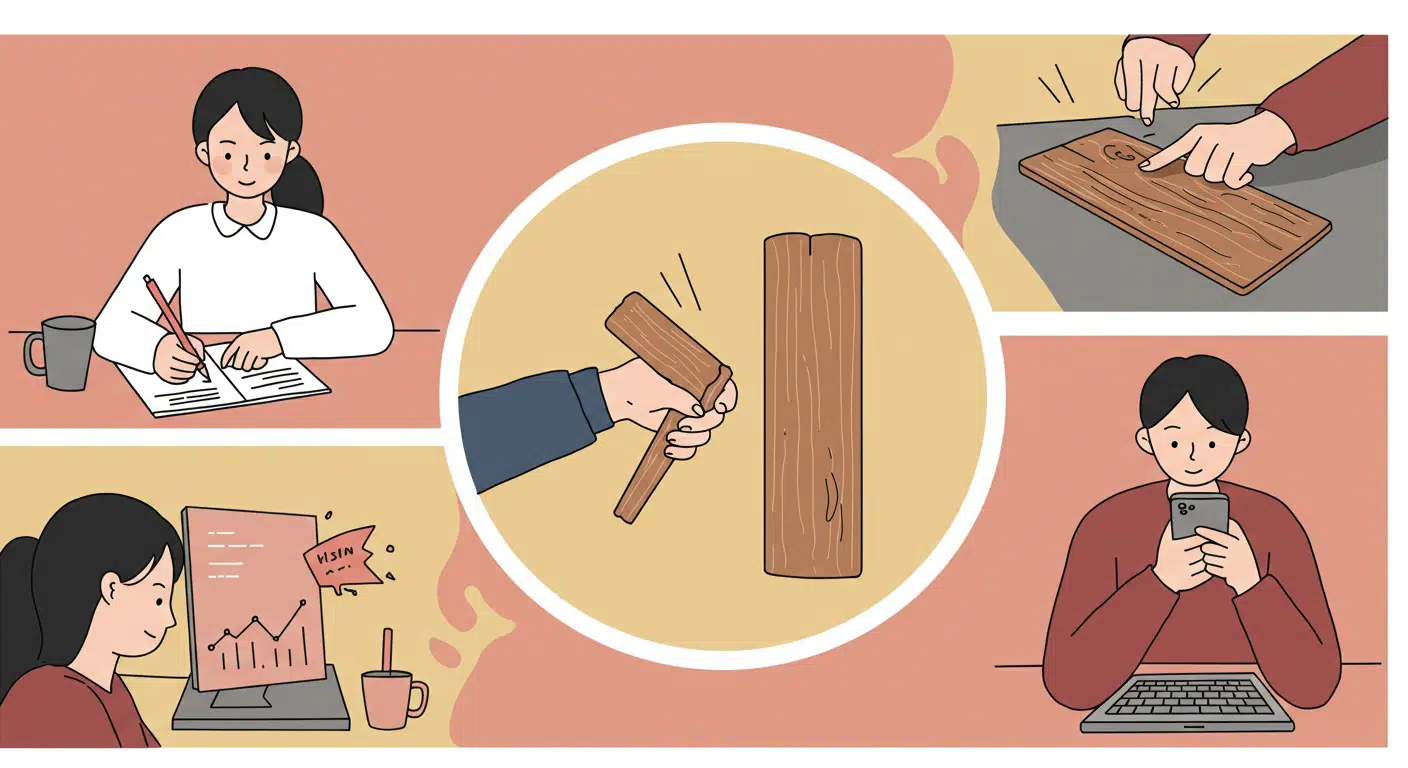This superstition holds that if one person gives another a yellow garter, a romantic union in the form of a marriage proposal is destined to occur within six months. The garter, often symbolic of intimacy and courtship in many historic traditions, becomes a token similar in function to a charm or talisman in this context. Typically, it would be discreetly exchanged during courtship, possibly during social gatherings or dances. The color yellow may symbolize joy, hope, or new beginnings in certain cultural contexts. The act of giving or receiving such a personal item suggests serious romantic intent and a meaningful emotional connection. Although the superstition does not clarify whether the giver or receiver is the one who receives the proposal, the timing — six months — is often considered long enough to transition from affection to formal commitment.

A baby’s future career or fate is predicted by the first object they select during a ceremonial setup.
In several Asian and Eastern European cultures, a traditional ceremony is held for babies usually around their first birthday. Known


